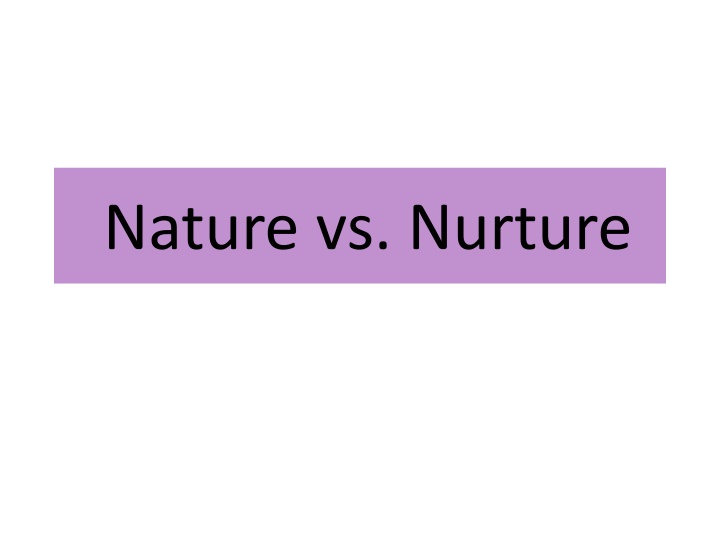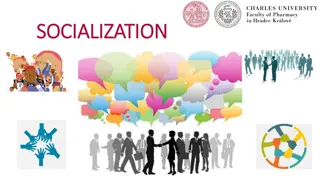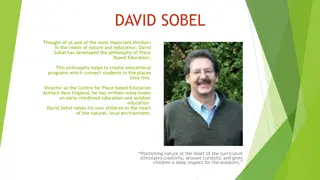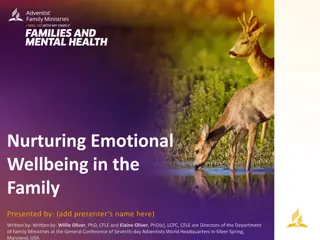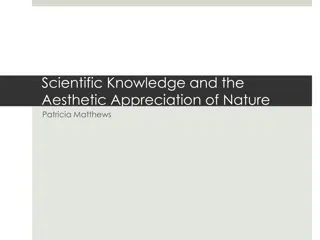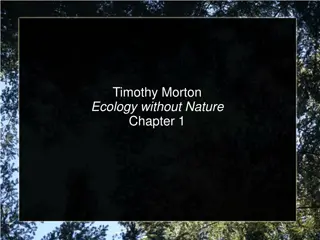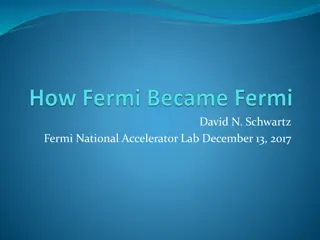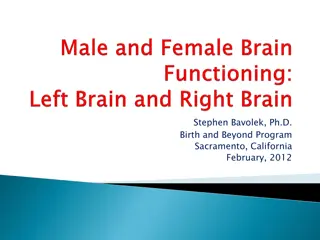Nature vs. Nurture
Understanding how nature (DNA) and nurture (environment) contribute to phenotypes like skin color and height. Exploring the impact of genes and life experiences on traits. Discovering the role of identical twins in determining genetic effects versus environmental influences. Delve into the field of epigenetics and its mechanisms, such as DNA methylation and histone modification, that regulate gene expression. Learn about epigenetic changes and their significance in genetic reprogramming.
Download Presentation

Please find below an Image/Link to download the presentation.
The content on the website is provided AS IS for your information and personal use only. It may not be sold, licensed, or shared on other websites without obtaining consent from the author.If you encounter any issues during the download, it is possible that the publisher has removed the file from their server.
You are allowed to download the files provided on this website for personal or commercial use, subject to the condition that they are used lawfully. All files are the property of their respective owners.
The content on the website is provided AS IS for your information and personal use only. It may not be sold, licensed, or shared on other websites without obtaining consent from the author.
E N D
Presentation Transcript
Nature and Nurture When both DNA(Nature) and life experience/exposure(nurture) contribute to a phenotype NATURE NURTURE TRAIT Inherited genes for skin color Sun can darken or redden skin or cause freckles to appear Skin color Height BUZZER: Traits influence by both DNA and environment tend to have a wide range of phenotypes
How would it be possible to determine how much of a phenotype was controlled by nature and how much by nurture? Twins: Is it All in the Genes? Twins: Is it All in the Genes? BUZZER: Identical twins develop from one single fertilized egg so they have the same genome. Differences can be due to their environment and not genes. Jim Twins Jim Twins
What's your risk activity
EPIGENETICS Epi = above = chemical modifications to the DNA or the histones that don't change the DNA sequence Epigenetic changes turn genes on/off Epigenetic changes are copied with the DNA during cell division GENOME EPIGENOME DNA SEQUENCES Directions to turn a gene on/off
Epigenetic Mechanisms 1. DNA methylation Usually turns genes off CH3 group added to some cytosine nucleotides 2. Histone modification (ex. Acetylation) Turns genes off by causing DNA to wrap more tightly around histone so RNA polymerase cannot get to the gene DNA sequence
http://www.google.com/imgres?imgurl=http://upload.wikimedia.org/wikipedia/commons/d/dd/Epigenetic_mechanisms.jpg&imgrefurl=http://en.wikipedia.org/wiki/Epigenetics&h=485&w=700&tbnid=6k1j0IBptYW9cM:http://www.google.com/imgres?imgurl=http://upload.wikimedia.org/wikipedia/commons/d/dd/Epigenetic_mechanisms.jpg&imgrefurl=http://en.wikipedia.org/wiki/Epigenetics&h=485&w=700&tbnid=6k1j0IBptYW9cM: &zoom=1&docid=o0OZS0cnsofOqM&hl=en&ei=eH0iVbqbMOq1sAS5y4KABA&tbm=isch&ved=0CB0QMygAMAA
REPROGRAMMING In most cases, gametes are wiped clean of epigenetic markers acquired during that parents life - this process is called reprogramming.
Epigenetic Videos Epigenome at a Glance Epigenetics of Identical Twins Lick your rat Epigenetics: Spanish Twins http://www.pbs.org/wgbh/nova/body/epigen etic-mice.html
